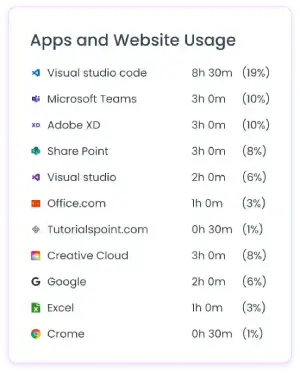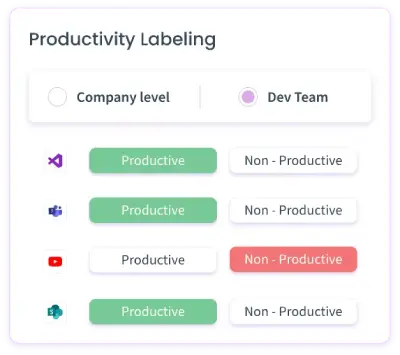Powerful & Popular
Productivity Tracking Software
Install, Observe, Enhance - Simple Success Strategy
- Productivity Tracking
- Whitelist Productive apps
- Detailed Activity
- Productivity Heat Maps
- Category Breakdowns
- Timesheets
- Nonproductive App alerts
- Audio Tracking

Thank you! We have just sent you an OTP. Please confirm.
If you want to change your email, please click here

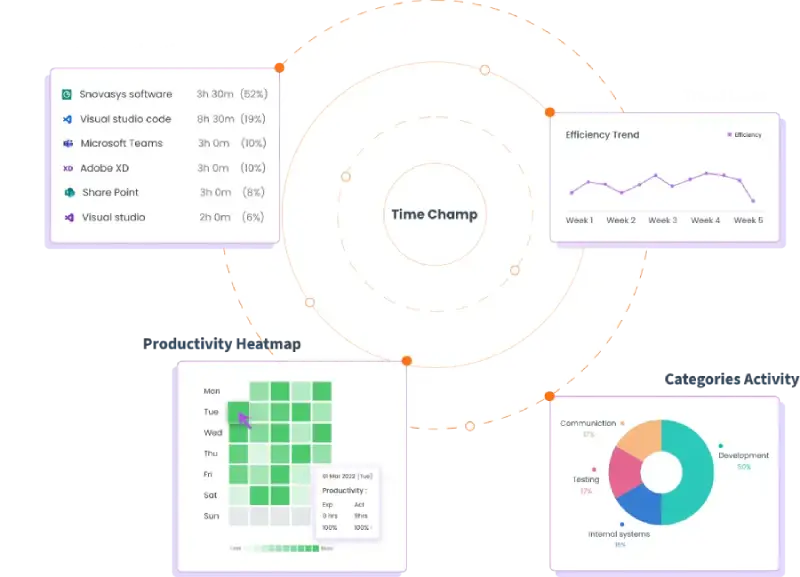
Boost Your Employee Productivity
Measure, analyze, and improve your employee productivity with Time Champ’s comprehensive features.
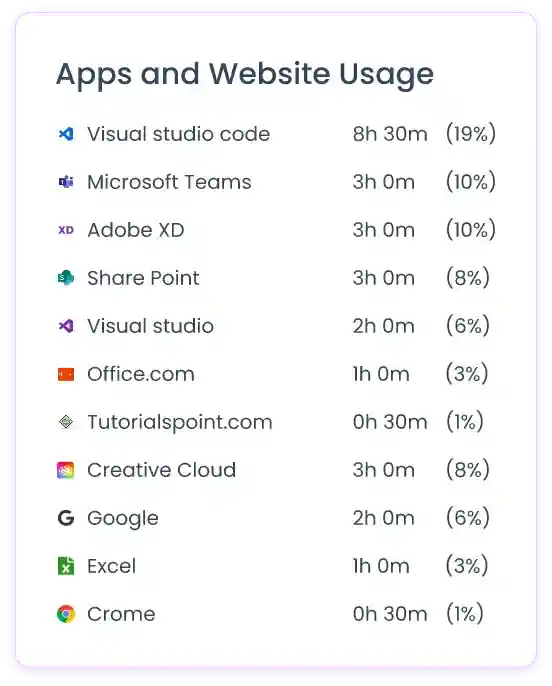
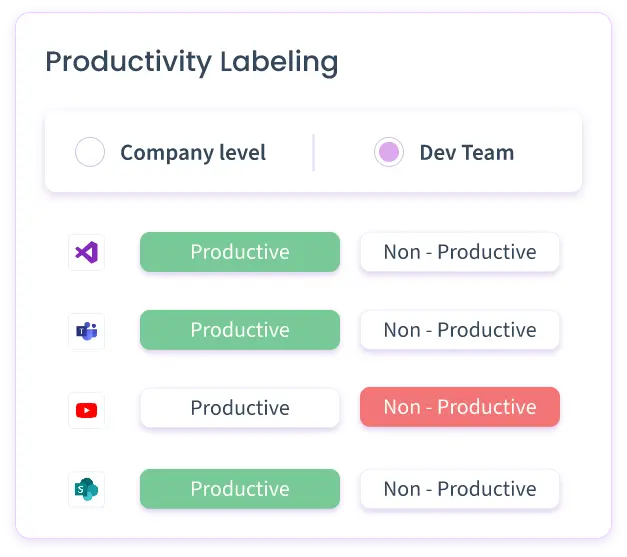
Apps and Website Usage
View the most utilized apps & websites across your teams with advanced productivity tracking software.
Productivity Classification
Categorize apps and websites as productive, unproductive, or neutral according to your business needs.
Productivity Tracking
Get productivity metrics from our tracking software based on app labels and usage time.
Activity Monitoring
Track all the computer activities your employees perform during work hours. and get active and idle time reports.
Achieve Top-Tier Efficiency with Our Advanced Productivity Features
Keep track of your team performance, and get clear insights into their
productivity, daily activities, and timesheets effortlessly.
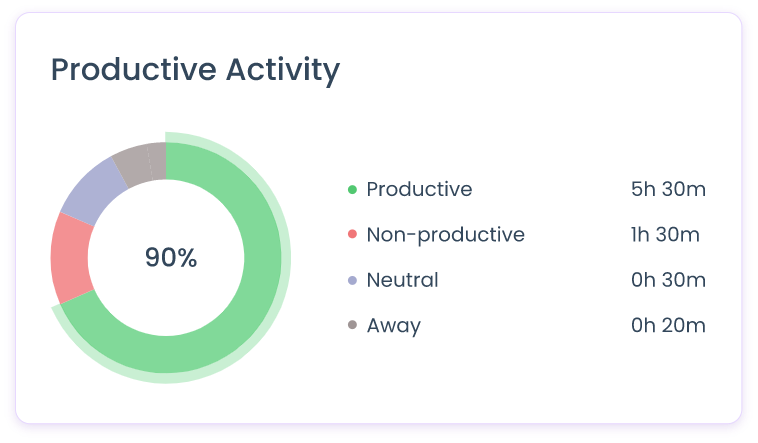

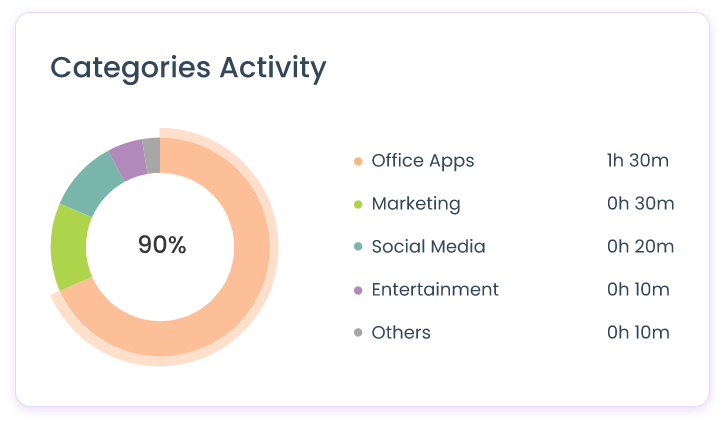
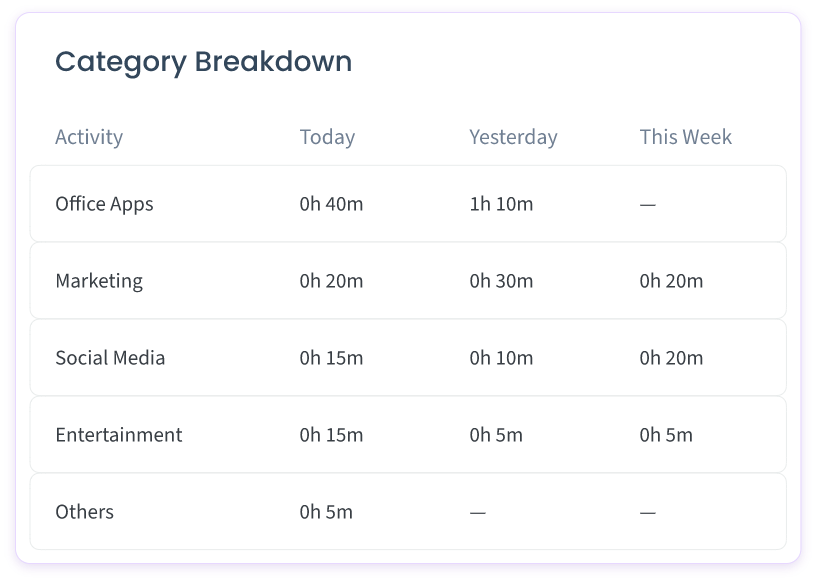
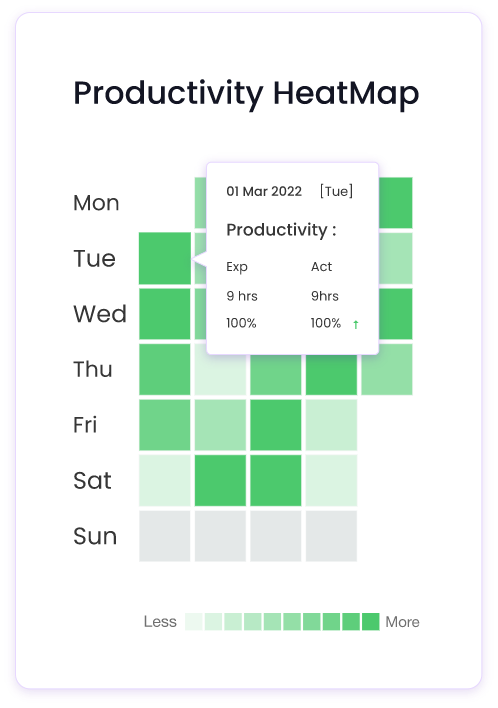
Productive Activity
Gain Insights into your Employee Productivity with Interactive Graphical Visuals.
Categories Activity
Receive categorized activity reports on what your employees have accessed and used.
Category Break Down
A complete list of categories along with the amount of time spent on each.
Productivity Heatmap
Get a comprehensive overview of your workforce productivity with heatmaps.
Get the Most Out of Time Champ
Organize, Manage, and Excel with Time Champ’s one-of-a-kind features.
Manager Login
Give managers exclusive access control over their teams' data, allowing them to monitor performance and modify productivity labels.
Employee Login
Grant access to employees for their personal data, to enhance transparency and accountability.
API
Seamlessly connect with any software your team uses, whether it is internal or external, with the Time Champ REST API.
Real Time Data
Get accurate and real-time information on your employees' computer activities, down to the second.
Alerts
Receive real-time alerts for low productivity levels and unwanted activities. Stay updated on your employee productivity and track any unwanted behaviours.
Employers
Automated reports from top productivity monitoring system solve quantification, analysis issues, reduce costs by 40%.
How Time Champ Helps Increase Productivity
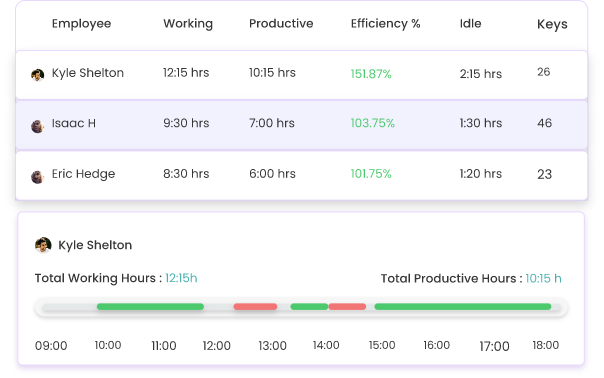
Analyze and Measure
Our productivity labelling, tracking, and reporting features provide you with an analytics platform that provides information about your employees’ daily habits and activities.
Improve
Use the data we provide as a foundation to organize additional training for those requiring it or create a rewards program to boost productivity. Locate and contain delays.
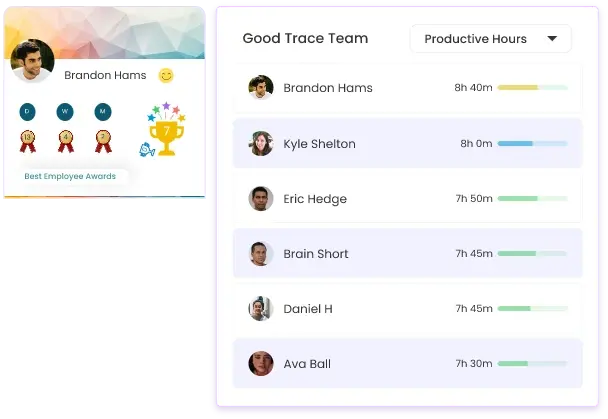
Use cases
Remote Teams
Got a global team? No worries. Time Champ helps you streamline workload management, set work priorities, maintain high productivity, and improve overall team collaboration effortlessly.
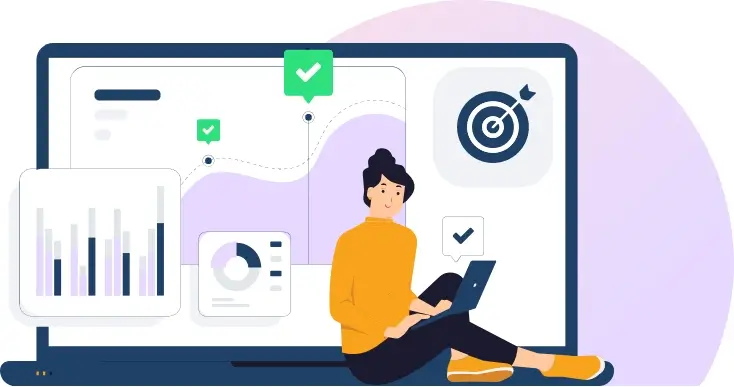
Office Teams
Get a clear view of team activities from your laptop. Stop wasting time trying to find what your employees are working on. Just sign in to your dashboard and access everything at your fingertips.
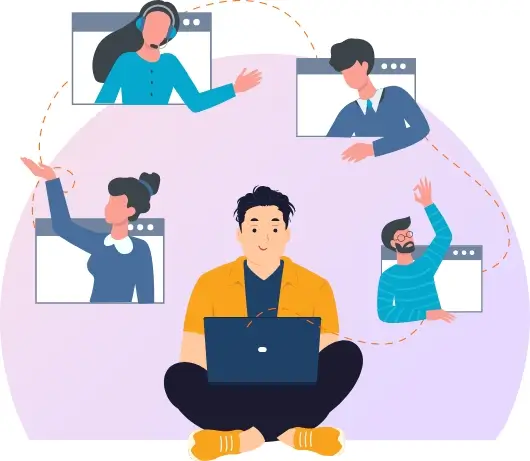
Hybrid Teams
Increase the productivity of your office-based teams and remote employees with Time Champ, perfectly crafted for all your unique business needs and goals.

Effortlessly Install Time Champ in Less Than 10 secs
Try the simplest solution right now


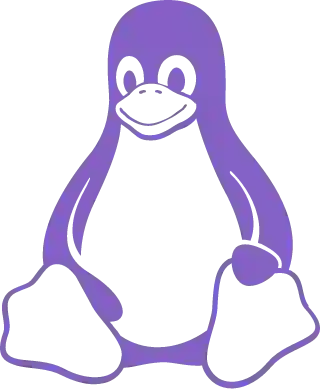

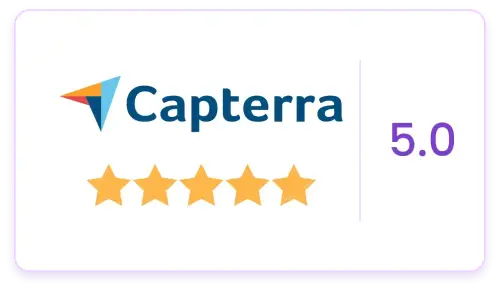
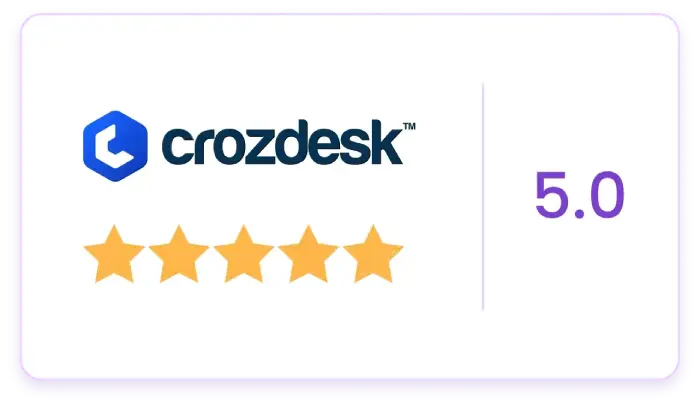
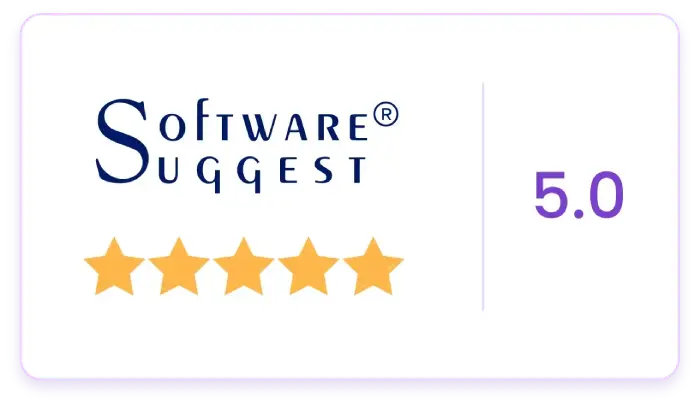
Time. Productivity. Monitoring. Tasks.
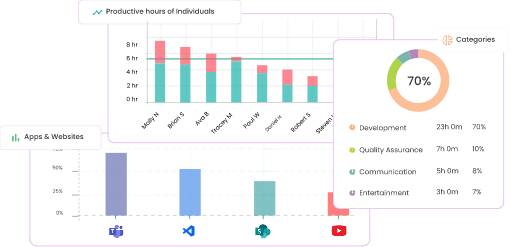
Ready to Take Full Control of Your Workplace?
Cloud Solution
Effortless setup in minutes for teams. No IT help needed. Securely store your data on Google Cloud’s advanced infrastructure with top-notch security protocols.
Own Your Data with our On-Premises Solution
Take control of your data with our On-Premises Solution. Ideal for your team needing full control, this custom option requires your technical expertise and IT team collaboration. Safely store data on your own servers to ensure protection and peace of mind.
Productivity Tracking Software: The Ultimate Guide
Productivity has been a hot topic for a long time and for good
reason! But why does it appear so difficult to achieve?
And what can you do about it? Join us
as we investigate productivity barriers and how to overcome them.
Guide Topics
Introduction
What is a Productivity Tracking Software?
Importance of Productivity Tracking
High vs. Low Productivity
Benefits of Productivity Tracking Software
How Can I Measure Productivity?
What Productivity Metrics Will Benefit My Business the Most?
What are Best Practices to Measure Productivity?
What are the Challenges in Productivity Tracking?
Why Managing Productivity is Important?
How to Manage Workforce Productivity?
Use Productivity Tracking and Management Tools
How Can I Identify & Eliminate Productivity Bottlenecks?
How Can I Ensure Consistent Productivity in Distributed Teams?
How Can I Monitor Employee Activity While Maintaining Privacy?
How Time Tracking Drives Higher Productivity Among Employees?
Can Employee Monitoring Enhance Productivity?
Key Takeaways
Introduction:
You can assume or estimate your employees' working hours, but with productivity tracking software, you can achieve accuracy and transparency.
Let’s do a quick math exercise: How many hours are your employees really working if they arrive at 9 a.m. and leave at 6 p.m., but have an hour lunch break? Go all out. If you said 7 hours, you were wrong. Even if you divide it, you are still going to be off no matter how you do it.
The correct answer is 2 hours and 53 minutes. Yes, you heard that right, this means that:
A) There is no ideal employee who spends all the office hours doing real work and
B) Workplace productivity is a huge problem that is still waiting to be solved.
Luckily you have a solution that can help you improve your workplace productivity better and that is employee productivity monitoring software.
In this guide, we will discuss what is a productivity tracker, key metrics, benefits, and challenges of employee productivity monitoring software.
What is a Productivity Tracking Software?
Productivity tracking software is a tool that is used to track and measure the level of productivity of individuals or teams. It offers information on different aspects of working behaviour and productivity, and how work time is spent.
Additionally, productivity tracking tools often provide reporting features that generate insights from the collected data. These reports can be customized to show patterns in productivity, identify bottlenecks, and highlight areas for improvement. Some advanced software may also integrate with other project management or communication tools to offer a more seamless workflow experience.
Productivity tracking tools also have options for goal setting, progress measurement, and report generation in most of them. This assists the users and managers in evaluating productivity levels, decision making and even in the formulation of strategies to improve productivity.
Importance of Productivity Tracking
Productivity tracking is very important in any organization and is the key to the success of any business. Measuring work in progress helps organizations understand how employees perform, how workflows and where there is room for enhancement.
By using productivity tracking you can,
- Enhance performance management
- Identify bottlenecks
- Increase accountability
- Improve resource allocation
- Enhance employee development
- Benchmark and set goals
- Increase transparency
Additionally, productivity tracking promotes a healthy work-life balance by monitoring work hours and identifying issues, leading to better efficiency. It offers valuable insights for continuous improvement, helping teams streamline workflows and enhance performance while preventing burnout.
High vs. Low Productivity
High ProductivityBenefits of Productivity Tracking Software
-
Improves Time Management
Productivity tracking software assists in identifying the activities that take a lot of time but do not contribute to the goals of the business.
By analyzing how time is spent, organizations can streamline processes and eliminate inefficiencies.
-
Increases Productivity
Through productivity measurement, you can view your employee’s productivity levels and ensure they are working on tasks that contribute most to the business goals.
The software assists in identifying the places where work is slowed down and can be addressed on time.
-
Better Resource Allocation
Organizations can manage time and resources in a better way, so that the teams are not overloaded with work, or on the other hand, they are not idle.
Productivity tracking helps distribute work evenly across teams, reducing burnout and increasing overall efficiency.
-
Data-Driven Decision Making
The data collected from productivity tracking provides insights that can be used to make informed decisions about team structure, project timelines, and resource allocation.
In the long run, the productivity data can be used to identify trends in productivity, and this can be used to predict the future performance of the workers.
-
Improved Project Management
Project managers can monitor the progress of the project in real-time and this means that the project will not go out of control by taking too long or costing more than it was planned.
The software helps you prioritize tasks based on their importance and the level of urgency, leading to better project outcomes.
How Can I Measure Productivity?
Employee productivity can be measured in several ways depending on the objectives of the organization, the field of work, and the profession. The most frequent approaches to productivity measurement include quality metrics, such as the efficiency of the work done and performance metrics, including task completion rates and time management.
Additionally, using tools like productivity tracking software can offer detailed insights into how productively your employees are spending their work hours, while feedback mechanisms can assess the impact and satisfaction of the output. Combining these approaches helps create a well-rounded understanding of productivity, allowing you to tailor strategies for maximum effectiveness and continuous improvement.
What Productivity Metrics Will Benefit My Business the Most?
Key Metrics for Productivity Tracking
-
Time Spent on Tasks
Tracking the time spent on various tasks and activities provides in-depth insights into employee productivity levels and time management skills.
-
Task Completion
Tracking the completion rates of the tasks assigned assists in determining the performance and responsibility of the employees.
-
App & Website Usage
Monitoring app and website usage offers valuable insights into how employees allocate their time across different platforms, helping to identify productivity patterns.
-
Focus and Distraction Levels
Monitoring focus and recognizing distractions helps individuals improve their work environment and reduce interruptions effectively.
-
Efficiency and Effectiveness
Evaluating how tasks are accomplished gives an understanding of the productivity of the workers and the quality of the work done. Daily productivity trackers assist you in keeping track of your workforce time and progress so that the tasks remain on track.
-
Team Collaboration & Engagement
Understanding how well your team communicates and works together, offers valuable insights into their overall productivity, highlighting areas where collaboration is strong and where improvements might be needed.
-
Project Progress
Monitoring the rate at which projects progress and are accomplished gives you an idea of the productivity of the team and whether deadlines are being met or not.
-
Resource Use
Observing how resources are used within the team guarantees that they are they’re being put to good use and that nobody is overburdened or underutilized.
What are Best Practices to Measure Productivity?
Here are some of the best practices you can use to enhance your staff productivity.
-
Customize Metrics for Each Role:
Work with the team leaders and employees to develop metrics that are relevant to the particular job role and guarantee that all the staff members are evaluated fairly.
-
Balance Quality and Quantity:
Don’t just count numbers, assess the quality of work too. Mix in qualitative evaluations to get a fuller picture of productivity
-
Acknowledge Intangible Contributions:
Recognize the value of hard-to-measure contributions. These are usually very important in overall productivity but are often neglected.
-
Avoid Overwhelming Data:
Having too many metrics can lead to confusion. Employ a single application to work with productivity and make sense of what is relevant.
-
Adapt to Remote Work:
Remote work is essential for leveraging the benefits of flexibility and broader talent access. Embrace this shift to enhance productivity and optimize operations. You can use digital tools to keep track of your employee progress, no matter where your team is working from.
-
Support Employee Well-being:
The problem with concentrating solely on productivity is that it can cause burnout. Encourage a healthy work-life balance and periodically assess the impact of productivity targets on your team’s well-being.
What are the Challenges in Productivity Tracking?
The productivity tracking software has many advantages along with some challenges that must be solved properly.
-
Privacy and Data Security:
Collecting and storing the employee data without violating their privacy can be challenging.
Always ensure that you respect your employee privacy and protect the data collected.
-
Subjectivity and Biases:
Measures of productivity can be rather ambiguous, and it is possible to have a biased approach to the analysis of results. It's crucial for you to create clear and fair evaluation criteria so everyone knows what to expect and feels treated equally.
-
Implementation and Adoption:
Organizations might face resistance from the employees regarding the implementation of the productivity tracking software. To ensure that productivity monitoring software is effectively adopted and used, you need to ensure that you plan well, train your employees and ensure that you get their support.
-
Overemphasis on Quantity over Quality:
Striking the right balance between the quantity and quality of work remains a significant challenge. You need to find a balance between the quantity of work produced and the quality and the value of the work produced.
Why Managing Productivity is Important?
Managing productivity is crucial in today’s fast-paced work environment as it directly affects your organization's performance and profitability. Efficient productivity management ensures you use resources optimally, leading to cost savings, higher output, and timely project completion, enhancing your competitive edge. It also fosters a positive work culture, increasing employee engagement and satisfaction.
- Streamline Operations
- Enhance Employee Well-being
- Allocate Resources Strategically
- Strengthen Competitive Position
- Build Strong Foundation for growth
- Ensure Long-Term Success
- Wasted Resources
- Loss of Competitive Edge
- Declining Performance
- Missed Growth Opportunities
- Strained Professional Relationships
- Financial Setbacks
Improper productivity management leads to decreased workforce efficiency.
- Organizations that fail to manage productivity are 40% vulnerable to lag behind competitors who effectively manage operations.
- 79% of customers who experience service delays or errors due to poor productivity are less likely to return for repeat business.
When companies lack the required strategies to boost employee productivity, the consequences are seen across the company. It is important to note that productivity management is an area that should be given priority, to avoid the above pitfalls.
How to Manage Workforce Productivity?
Managing workforce productivity differs by industry, but there are key principles that every organization should focus on.
-
Encourage Collaboration and Communication:
Encourage open communication and teamwork to enhance workflow, help teams solve problems faster, and work more efficiently.
-
Offer Work-Life Balance:
Implement policies that support a healthy work-life balance to reduce burnout and keep employees motivated and productive.
-
Recognize and Reward Performance:
Acknowledge and reward good work to encourage employees to maintain or improve their performance.
-
Invest in Employee Development:
Offer training and growth opportunities to enhance skillsets, increase motivation, and raise productivity.
-
Foster a Positive Work Culture:
Create a supportive and positive work environment to keep your employees engaged and motivated and perform their best at work.
Use Productivity Tracking and Management Tools
Use productivity Management ToolsProductivity management tools make it easier for managers to track how well their employees are doing, setting clear goals and giving helpful feedback. This way, employees know exactly where they stand and what they can do to improve themselves. Celebrating good work and addressing challenges keeps everyone motivated and aligned with the team's goals.
Communication and Collaboration ToolsCommunication tools help the teams to be in touch easily, even if they are in the office or working from home. With features like chat, video conferencing, and file sharing, everyone can share their thoughts and progress in real time. This not only makes things faster but also clears up misunderstandings and makes the teams run more efficiently.
Time Management ToolsTime management tools are great for tracking how employees spend their workday. They provide valuable insights into which tasks are taking the most time and where improvements can be made. This way, teams can prioritize the most important tasks and eliminate time-wasting activities, making sure the workday is as productive as possible.
Quality Assurance ToolsQuality assurance tools are important in ensuring that work is done to the best of its potential the first time it is done. They assist in identifying errors before they are made so that you can reduce the incidence of having to redo work and guarantee quality.
How Can I Identify & Eliminate Productivity Bottlenecks?
If you are thinking bottlenecks cause delays in the project, then yes you are right. 72% of organizations experience delays in project completion due to workflow bottlenecks.
Some of the effects of bottlenecks can cause are low employee morale, dissatisfied clients, loss of revenue and time wastage. However, with the right strategies and planning, you can recognize these bottlenecks that slow down the workflows.
In order to eliminate bottlenecks, you need to identify them first,
Identifying Productivity Bottlenecks-
Process Mapping:
First of all, you need to draw a process map. This involves taking records of all the activities from input to output and the persons involved. It is easier to identify where bottlenecks are when you have a clear picture of the whole process.
-
Performance Data Analysis:
Search for trends or activities that are usually followed by a decline in performance by using performance data and analysis. Look for queues, long waiting times or where work piles up.
-
Feedback from Teams:
Engage the teams that are most sensitive to the processes. They often have first-hand experience of where bottlenecks occur and can provide feedback on what causes delays.
-
Productivity Tracking:
Use productivity measurement tools or methods to measure the time taken on tasks at different levels of the process. This assists in making a quantitative analysis of the delays and determining which phase requires enhancement.
-
Capacity Analysis:
Assess the capacity of each stage in your process. This is usually the case when one or more stages are overloaded while others are underutilized most of the time. The distribution of workload across the stages can help to avoid bottlenecks.
-
Prioritization:
Once bottlenecks are identified, prioritize them based on their impact on overall efficiency and business objectives.
-
Process Optimization:
Minimize and reduce complexity and redundancy in as many areas as possible. Identify activities that are repetitive, approvals that are not required or processes that are unnecessarily long.
-
Resource Allocation:
Allocate resources strategically to address bottlenecks. This may involve redistributing workload, investing in additional resources, or reallocating personnel to high-demand areas.
-
Automation
Automate any task that is repetitive or involves manual intervention that leads to time wastage. Automations minimize human interference and enhance the rate of work delivery, which may even remove delays.
-
Training and Development:
Make sure that the teams are equipped with the right skills and knowledge to do the work effectively. Sometimes, bottlenecks occur because of ignorance or inefficiency in some areas.
-
Continuous Improvement:
Establish a culture of continuous improvement where teams regularly review processes, seek feedback, and implement incremental changes to prevent bottlenecks from reoccurring.
-
Technology Integration:
Acquire the best technology solutions that will enhance the flow of work and increase cooperation. The use of integrated platforms and software can help to avoid communication and task management issues and reduce bottlenecks.
Imagine a customer support team experiencing bottlenecks in responding to customer queries. By analyzing response times and customer feedback, they identify a bottleneck in the ticket escalation process. They streamline the escalation criteria, provide additional training to support agents and implement automation for routine queries. As a result, response times improve by 30%, leading to higher customer satisfaction scores.
How Can I Ensure Consistent Productivity in Distributed Teams?
As your team grows, how certain are you about measuring the productivity levels of remote employees? While flexible work arrangements are increasingly common, many managers still find it challenging to accurately monitor the productivity of remote workers.
The following tips will help you to maintain the productivity of the distributed teams.
- Hold regular check-ins to maintain clear communication and ensure consistency within the team, reducing the chances of misunderstandings and project delays.
- Promote clear work-life balance by setting defined work hours and encouraging regular breaks, helping to maintain productivity over time.
- Support the remote workers in setting up proper workstations and offer guidance on how to avoid interferences at home.
- Provide employees with the necessary technology such as computers and other gadgets and provide them with training on how to use the technology.
- Build a strong team culture through virtual team-building exercises and informal gatherings to boost engagement and reduce feelings of isolation.
- Make sure that productivity measures are outcome-based so that there is no bias and unfairness in evaluating the performance of the employees.
- Implement the use of asynchronous communication and flexible working hours to cater for all the time zones and make it possible for all the members of the team to contribute without having to sacrifice their efficiency and health.
- Finally, incorporate productivity management tools. These tools allow you to track performance, manage tasks, and ensure that all team members stay aligned with the company’s goals, regardless of their location.
Time Champ provides comprehensive tools for remote team management, from time tracking to productivity management. These tools support flexible work arrangements, help you efficiently track and manage your remote workflow processes, and ensure that business goals are achieved on time.
How Can I Monitor Employee Activity While Maintaining Privacy?
Organizations must strike a balance between monitoring productivity and safeguarding employee privacy. Crossing the line can result in loss of trust, potential legal issues, and decreased workplace morale and efficiency. Here are some strategies for tracking remote employee productivity without compromising on privacy.
-
Maintain Transparency:
Be clear about the monitoring policies, describe what is being monitored, how it is done and why it is being done.
-
Minimize Data Collection:
Collect only the data that is necessary to achieve the objectives of the business.
-
Provide Opt-Out Options Where Possible:
Give your employees the choice to opt out of non-critical monitoring activities. Be transparent and respond to any questions or issues that the employees may have about tracking.
-
Use Ethical Monitoring Solutions:
Choose tools that do not violate the privacy of the employees at the same time offer valuable information, avoiding too much intrusion into employee activities.
Time Champ provides comprehensive tools for remote team management, from time tracking to productivity management. These tools support flexible work arrangements, help you efficiently track and manage your remote workflow processes, and ensure that business goals are achieved on time.
How Time Tracking Drives Higher Productivity Among Employees?
Earlier, time tracking was done through paper timesheets, technological developments have resulted in the use of timekeeping software for employees – such as apps for tracking employee hours. Both time tracking tools and employee productivity monitoring software can be applied in any type of workplace.
Time tracking tools assist you to,
- Eliminate overlapping responsibilities by identifying them and streamlining team collaboration to avoid redundancy.
- Address all the delayed tasks in real-time by receiving notifications to avoid more delays and keep all the projects on track.
- Ensure smooth project transitions by tracking task dependencies, minimizing downtime and disruptions.
- Improve the estimation of the project scope using historical data of the time taken to complete tasks.
- Set personalized performance benchmarks for team members based on their working patterns, driving continuous improvement and accountability.
- Assist employees to improve their work productivity by identifying their most productive time and changing their working schedules.
- Recognize patterns of overwork or under-utilization to provide timely interventions, such as reassigning tasks or offering additional support.
- Analyzing task durations to allocate resources effectively and avoid overloading specific team members or departments.
Time Champ offers features for both productivity and time tracking that help you efficiently monitor your workforce, organize your work, and ensure that the workload is balanced. By using these tools, you can identify overburdened areas and make adjustments to improve overall team performance and well-being.
Can Employee Monitoring Enhance Productivity?
Monitoring employees is meant to increase productivity through the improvement of the physical and social context of work. As more and more people work from home, there is more focus on technology that is used to monitor performance and the success of such technologies to Enhance Productivity.
Some benefits of monitoring employees include,
- Detection of Suspicious Behavior
- Improved Performance Tracking
- Efficient Task Management
- Better Remote Team Oversight
- Improved Team Collaboration
- Enhanced Security Measures
- Reduced Policy Violations
- Improved Work Quality
- Reduced Overhead Costs
Monitoring your employees is an effective way to boost your workforce productivity and promote accountability while streamlining workflows, leading to more efficient operations overall.
Key Takeaways
Effective productivity management is essential for enhancing performance and maintaining a competitive edge. Productivity tracking software offers precise insights into work habits and task completion, helping organizations optimize time management, resource allocation, and decision-making.
A balanced approach to monitoring and privacy not only enhances employee performance but also streamlines operations, setting the stage for sustained success and a competitive edge.
Ultimately, by managing productivity thoughtfully, you can enhance both individual and team performance, create a positive work environment, and reduce burnout, all while ensuring that everyone effectively contributes to your goals and adapts to evolving market demands.
Frequently Asked Questions
Yes, you can manually take screenshots and set configurations to automatically capture screenshots at certain time intervals.
No, Time Champ tracks desktop activity only during working hours, you can schedule working hours for your employees based on their time zones.
Yes, productivity tracking software can be used in performance appraisals since it provides information on productivity, completion rates and performance. It helps the managers to make more rational and fair evaluations.
Yes, you can absolutely customize the attendance reports according to your needs.
You can get access to employee time, activity, project and task progress Apps used,Websites visited ,Productive and non-productive time ,Screenshots of the desktop taken (1 per every 5 minutes (or) configurable) ,Total working time ,Attendance and leaves taken ,Breaks taken , Projects and tasks worked on, Audio and location capturing,Screen recordings and live screen display









